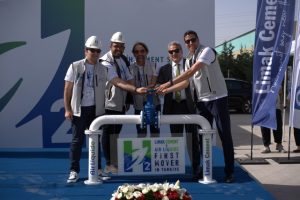The second plant is scheduled to start operating one year later. The two electrolysers are part of RWE’s efforts to build a total of 300 MW of electrolyser capacity in Lingen by 2026 as part of GET H2. Using electricity from renewable sources, the electrolysers will produce green hydrogen for industrial customers.
As production of electrolyser stack modules of this size takes several months, they must be ordered well in advance. GET H2 is one of RWE’s four hydrogen projects that have been shortlisted for funding for Important Projects of Common European Interest (IPCEI) since May 2021. Approval by the EU Commission under state aid law (notification) is pending for funding by the German government and the state of Lower Saxony.
Nevertheless, RWE has now placed the order to ensure that the commissioning dates in 2024 and 2025 are still achievable in the event of approval under state aid law. These deadlines would be impossible to meet if there were further delay.
This does not yet imply a final investment decision. It is therefore all the more important for RWE to receive the notification soon.
The aim of the GET H2 joint initiative with national and European partners is to create the necessary critical mass to build a supra-regional hydrogen infrastructure and develop a hydrogen market in Europe.
As part of its ‘Growing Green’ strategy, RWE has announced its intention to build at least 2 GW of electrolysis capacity for the production of green hydrogen by 2030. RWE is involved in more than 30 projects worldwide at all stages of the hydrogen value chain.






